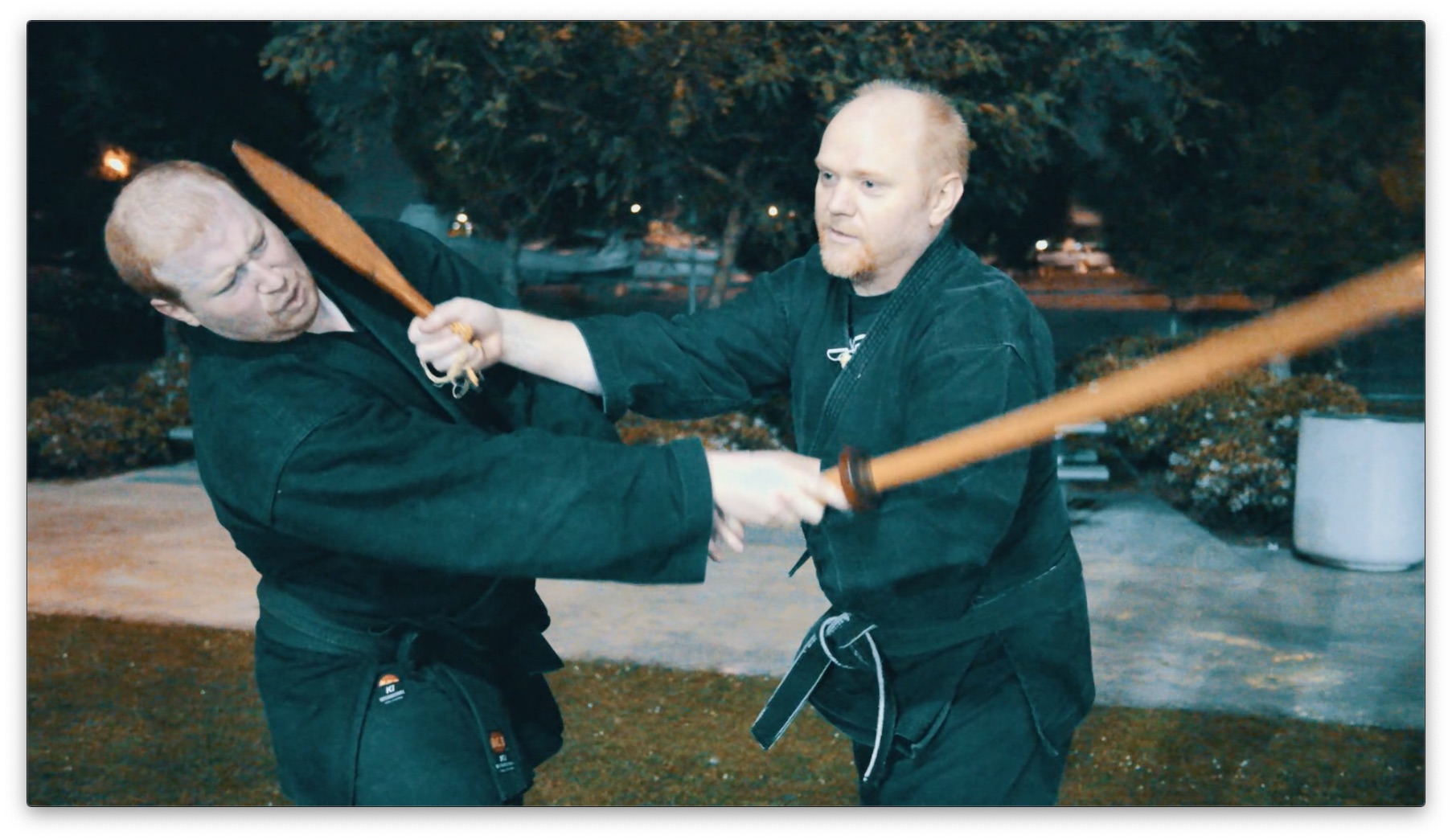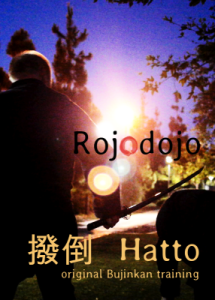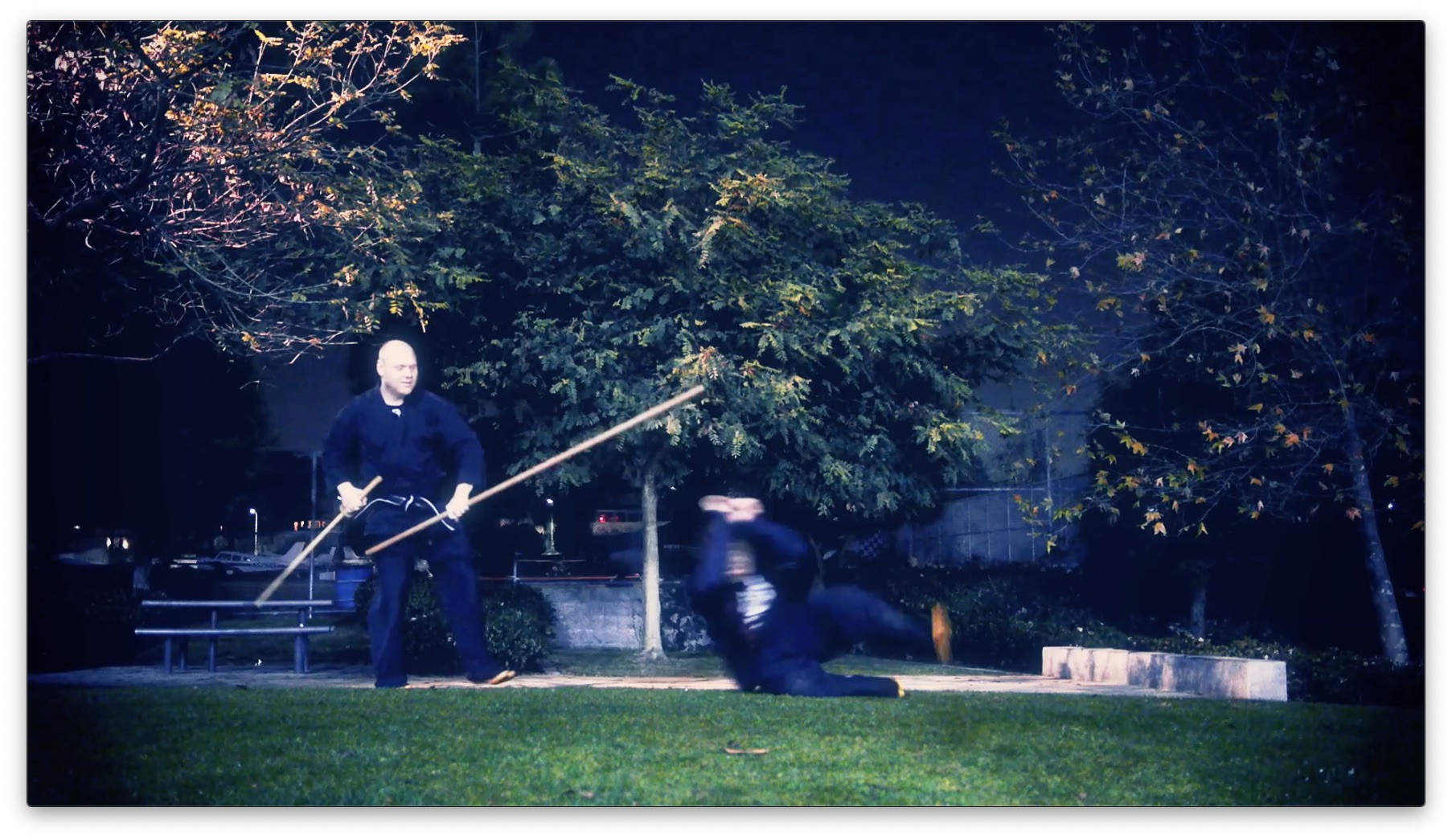桐之一葉 Kiri no Hito Ha and 十方折衝 Juppo Sessho
Tonight we study 桐之一葉 Kiri no Hito Ha to pull back the curtain on 十方折衝 juppo sessho. Even the name of this kata gives some insight. It refers to a Japanese saying from classical Kabuki theater, "One leaf of the Paulownia tree falls to earth/The inevitable winds of change have come."
撥倒 Hatto and 鯉口の切り方 Koiguchi no kirikata
Tonight my focus was 鯉口の切り方 Koiguchi no kirikata. This is "cutting the carp's mouth," or freeing your sword from the "mouth" of the saya. There are nearly infinite ways to do this. But sadly, most sword schools obsess on only one or two.
玉返 Tama Gaeshi
Our topic for tonight is 玉返 Tama Gaeshi. This is often translated as "ball counter." This sounds funny to English speaking ears. But the kata does finish with a strike to 鈴 suzu. Also tama can be read as "jewel" and maybe you'd better protect the family jewels.
浦波 Ura Nami
Tonight we are studying 浦波 Ura Nami. This kata is named after the patterns of the breakers that wash ashore. Here in Santa Monica, we live near an inlet that has these breakers. I personally have stood there on many evenings admiring the sunset and observing the patterns of these waves.
両小手 Ryō Kote
Next we reviewed the kata 両小手 Ryō Kote. The name of this kata is direct and you find this out on the very first move. Of course there are tricks to striking both kote.
In the Japanese text for the kata, it says to pull your left foot back for the first strike. This exposes a problem. If you and the swordsman are at a correct distance initially, it is difficult to actually strike kote at all when you step back.
神韻武導 Shingin Budo
Here is a video of my latest notes from Japan about 神韻武導 Shingin Budo.
When I was training in Japan last week, I wrote extensive notes. I also recorded some video. This is part of my own learning process.
If you've been on a training trip to Japan yourself, you know how compressed that experience can be. Maybe you go to 2-3 classes everyday for 2 weeks. That is more classes than some people who live in Japan attend in a whole year! It is a huge amount of information crammed into a short time.
前広 Maehiro
I began tonight with the kata 前広 maehiro. One meaning of this kata is opening a wide space in front. In English we say, the road is wide open in front of you. Or wide open space. This means a space of freedom where you can move uninhibited. It also means anything is possible or anything can happen in that space going forward.
天地人 Tenchijin
I began class with the kata 天地人 Tenchijin. This kata starts from tenchijin no kamae. Hatsumi Sensei also calls this 三略之構 san ryaku no kamae. The definition for ryaku here is a Chinese reading, Meaning the stance of three strategies.
五輪碎 Gorin Kudaki
I began class with the kata 五輪碎 gorin kudaki. First I shared the gross movements just to get everyone taking the proper steps. Then I explained the goals of this kata. This is ihen sabaki, but beyond this overarching tactic, the goal is to attack or “crush” the 急所 kyusho 五輪 gorin. Most people only (more...)
附入 Tsukeiri
my Bujinkan 六尺棒術 Rokushakubō Jutsu video exploring 附入 Tsukeiri. Warmed up with eight directional striking drills. This is a real test of your taijutsu. If you do not have a basic grasp of taijutsu then it is very difficult to use the bo with any precision or control.
撃留 Gekiryu
In depth focus on the 六尺棒術 Rokushakubō Jutsu kata 撃留 Gekiryu. We warmed up with the basics of 足払 Ashi Barai and 面打払型 Men Uchi Harai Gata. I snapped a 1 3/8" (3.4925 cm) octagonal bo in half. I was sad.
蹴リ拳け゚ Keriage
To continue our study of 五境五界詒変捌型 Gokyō Gokai Ihen Sabaki Gata, tonight I focused on 蹴リ拳け゚ keriage. The name suggests a feeling or type of movement that very few employ in this kata. I shared three variations that I have learned.




